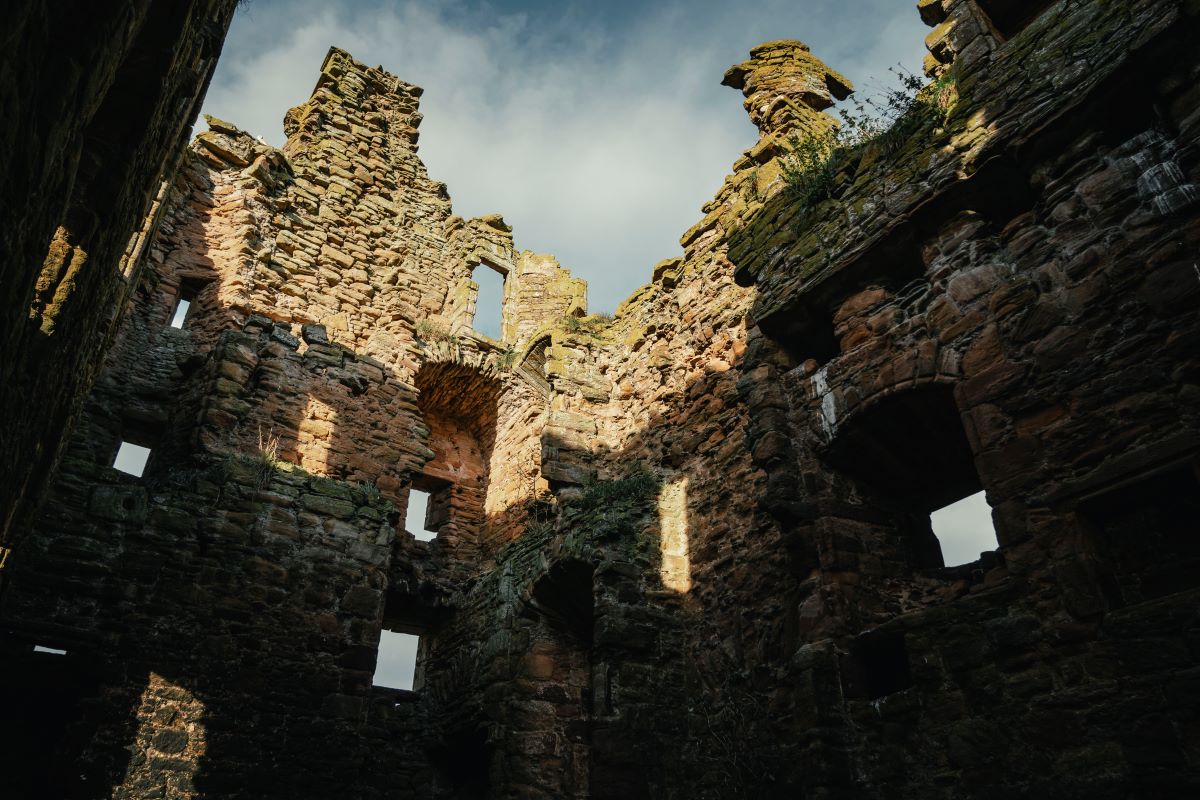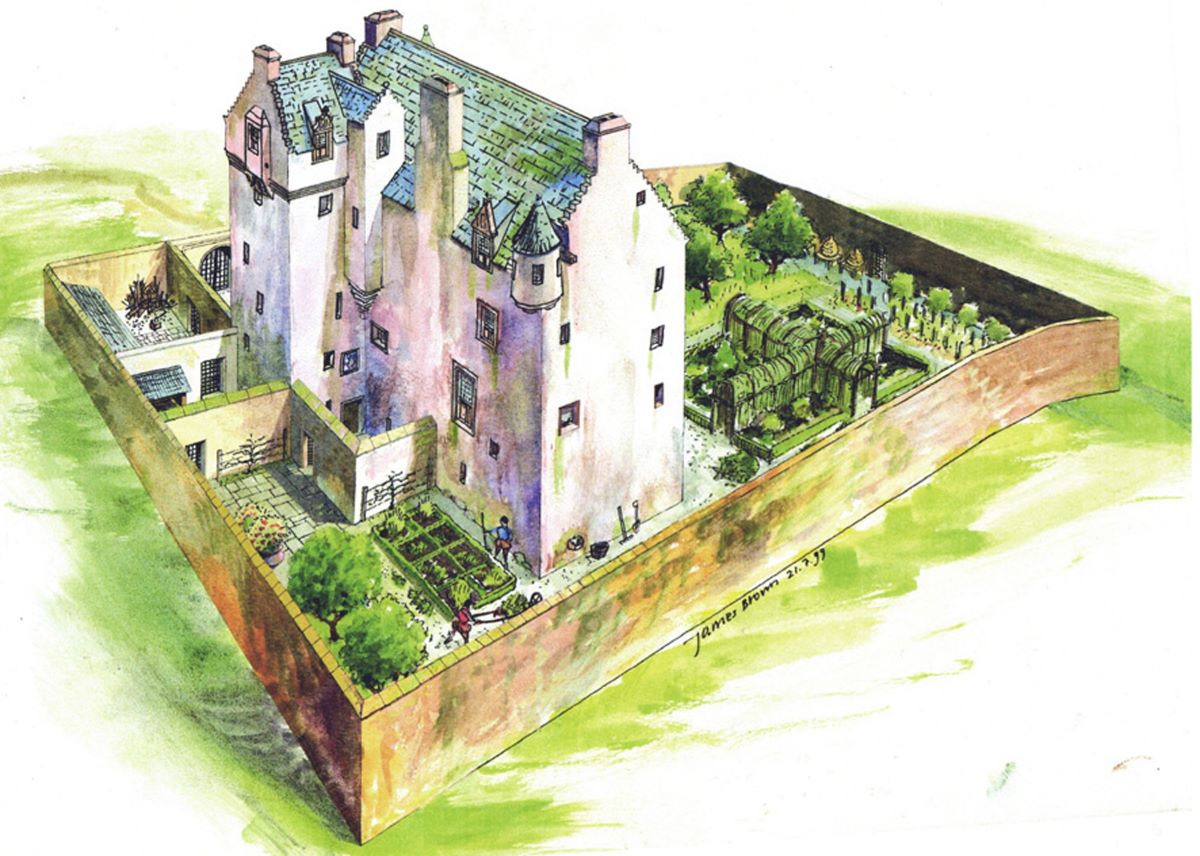
Scottish castle visited by Robert Burns in line for £2 million restoration after being sold to new owner
A historic Scottish castle visited by Robert Burns could be in line for a major restoration after being sold to a new owner.
Baltersan Castle is thought to have inspired architect and designer Charles Rennie Mackintosh, was visited by poets Robert Burns and John Keats, and a restoration plan was even pitched to the multi-millionaire investors on TV’s Dragons’ Den.
The 440-year-old landmark, near Maybole in South Ayrshire, has been bought by Italian computer engineer Angelo Ovidi for an undisclosed amount.
He wants to restore the category A-listed castle, with the proposed new venue to be funded at least in part by the launch of a food and drink brand trading on the image of Baltersan’s structure.
Mr Ovidi, a self-employed consultant now based in North Wales, first became interested in Baltersan while looking at investment opportunities in 2018.

New owner Angelo Ovidi
‘This is a fantastic place and I am excited to become its custodian,’ he said.
‘Baltersan has so much history and I am sure we can use that as a brand to generate income through local produce to both protect the castle’s future and support the local community.
‘It is not impossible for us to restore this property if everything goes to plan, although I am trying to keep my feet on the ground.
‘Restoration can be done in different stages. The first is to make the castle stable, then fix the bigger problem. I am keen to work with Scottish specialists, including Scottish stonemasons, to do all of this.’
The cost of full restoration has been estimated at up to £2m.
The castle was previously part of the small Lichtsome Hoose partnership led by retired sales professional James Brown.

Baltersan Castle
James who lives in Ayr, fell in love with castles – and the idea of owning one – as a child and was first drawn to Baltersan after spotting it while travelling for work.
He bought the castle in 1992, starting a remarkable journey to try and restore the site as a visitor attraction, securing planning permission for work as well as securing a £500,000 offer from Historic Environment Scotland to support any works.
The global financial crash of 2008, however, shattered hopes of that plan.
‘Baltersan’s architectural and historical value is exceptional,’ James said.
‘It’s a remarkable place. I am so pleased to have found a new custodian, someone who appreciates its history and can continue the work that we have started.
‘I do think this building is going to be saved. It will be restored. In many ways, it’s with a heavy heart that I have parted with the place.
‘But I can feel Angelo’s commitment to restoring the building. He has exciting plans.’
Baltersan Castle: History and facts

An artist’s impression of how Baltersan would have looked in its original glory
- Built in 1584, five-storey Baltersan Castle is considered an exceptionally refined example of a Scottish post-Reformation tower-house. It remained unaltered until its last occupants left in 1745, apart from the blockage of a gun loop at its entrance and the installation of a cistern or boiler in its kitchen.
- Constructed by bonnet laird John Kennedy of Pennyglen, it has strong historical connections with the Kennedy of Culzean and Cassillis families.
- Built during a notorious feud between the Cassillis and Bargany families, in which John Kennedy – the half-brother of the 4th Earl of Cassillis – was embroiled, security relied on a sequence of small courtyards, sturdy iron window grilles, well-barred entrance door and yett beside a gun loop, as well as numerous keek-holes and machicolations
- Rare architectural features include a split-level hall, unique ingleneuk seat, windows with slots for sliding shutters, a rare rhomboidal oriel window and a secret chamber.
- Charles Rennie Mackintosh sketched Baltersan in 1895, the year he worked on Glasgow School of Art, the design of which has visual links to the Ayrshire landmarks he visited, which includes Maybole Castle, Maybole College Kirk and Crossraguel. Baltersan would have been fresh in his mind as he designed the School of Art and Willow Tearooms in Glasgow.
- Poet John Keats recorded a visit to Baltersan in 1818, Robert Burns was said to have played in the ruins as a child in the 1760s while, in his 1795 Winter’s Walk in Carrick, Treasure Island author Robert Louis Stevenson dismissed Baltersan with one word: “Dilapidated”.
- At its finest, Baltersan boasted gardens, orchards, parks and woods.
Read more Homes & Garden stories here.
Subscribe to read the latest issue of Scottish Field.
TAGS

